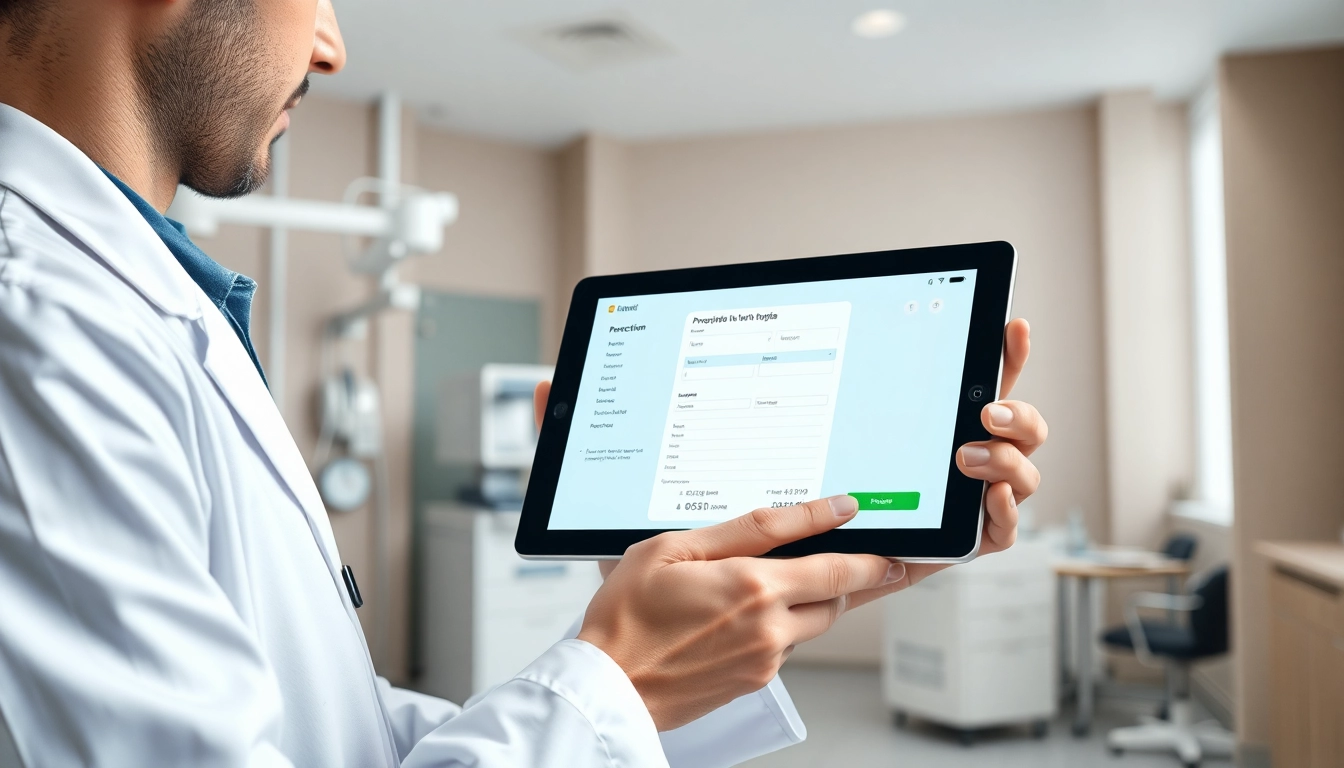Understanding the Best Eprescription Apps
What Are Eprescription Apps?
Eprescription apps are innovative digital solutions designed to enable healthcare professionals to manage the prescription process electronically. These apps facilitate the creation, transmission, and management of prescriptions in a secure and efficient manner, reducing the reliance on paper-based methods. With the rise in telemedicine and the increasing demand for streamlined healthcare services, the adoption of best eprescription apps has become integral to modern medical practices.
Key Features of Best Eprescription Apps
The most effective eprescription apps share several key features that enhance their utility for healthcare providers. These features often include:
- Instant Communication: Securely send prescriptions directly to pharmacies, minimizing delays in patient medication access.
- Medication History Access: View patients’ medication histories to avoid potential harmful drug interactions and track adherence.
- Refill Management: Simplify and automate the management of prescription refills, enhancing convenience for both doctors and patients.
- Patient Education: Provide patients with essential information regarding their medications, including dosage and side effects.
- Compliance Tracking: Monitor patient compliance and connect with them for necessary follow-ups.
The Importance of Compliance in Eprescribing
Compliance is crucial in the world of healthcare, particularly in medication prescription. Eprescribing apps need to adhere to various regulatory standards such as HIPAA (Health Insurance Portability and Accountability Act) for data privacy and security. By ensuring compliance, healthcare providers can safeguard patient information and trust in the electronic prescription process. Additionally, these apps can help reduce prescription errors, streamline practices, and improve medication safety overall.
The Benefits of Eprescription Apps for Healthcare Providers
Streamlining Prescription Processes
One of the primary advantages of utilizing eprescription apps is the ability to streamline prescription processes. Providers can eliminate the time-consuming task of writing prescriptions by utilizing user-friendly interfaces to create digital prescriptions quickly. This efficiency not only enhances workflow within practices but also promotes better management of patient consultations.
Enhancing Patient Safety and Medication Management
Eprescribing improves patient safety significantly by reducing medication errors commonly associated with handwritten prescriptions. Features such as drug interaction alerts provide healthcare professionals with opportunities to avoid harmful combinations, ultimately enhancing patient outcomes. Additionally, apps often include medication management tools that aid clinicians in monitoring patient medications and adherence to treatment plans.
Improving Provider Efficiency and Communication
With the transition to eprescribing, healthcare providers can expect vast improvements in communication among colleagues and pharmacies. The immediate transfer of prescription information not only speeds up the entire process but also fosters collaboration amongst healthcare professionals. This level of efficiency enhances providers’ capacity to focus on delivering quality care by minimizing administrative burdens.
Choosing the Right Eprescription App for Your Practice
Assessing Your Practice Needs
When selecting an eprescription app, it is pivotal to evaluate the specific needs of your practice. Factors to consider may include the volume of prescriptions processed, the types of medications frequently prescribed, and the particular needs of your patient population. Choosing an app that aligns with these factors will ensure a seamless match with existing workflows.
Evaluating User-Friendliness and Support
A user-friendly interface is essential for both healthcare providers and their staff. It is advisable to look for apps that present intuitive navigation and clear instructions.Beyond ease of use, consider the customer support offered by the service provider. Reliable and accessible support can make a significant difference during the implementation process and beyond.
Cost Considerations of Best Eprescription Apps
Cost remains a critical element when selecting an eprescribing app. It is essential to weigh the total cost of ownership, including subscription fees, training costs, and ongoing service charges. Moreover, consider potential savings achieved through increased efficiency and reduced errors as a measure of overall value.
Implementation Strategies for Eprescription Apps
Training Staff for Effective Adoption
Successful implementation of an eprescribing app requires comprehensive training for all staff members. Investing in high-quality training programs ensures that everyone is well-prepared to utilize the system effectively, which can mitigate resistance to change and reduce potential disruptions during the transition phase.
Integrating with Existing Systems
To maximize the utility of an eprescribing app, ensure it integrates seamlessly with your electronic health record (EHR) systems. Integration minimizes duplicate entry tasks, reduces errors, and ensures that patient data is consolidated in a single platform. Collaborate with IT professionals to facilitate a smooth integration process.
Monitoring Performance Metrics Post-Implementation
Continuously monitoring metrics related to the usage and effectiveness of the eprescribing app is vital. Key performance indicators (KPIs) might include prescription error rates, patient satisfaction scores, and time saved in the prescription handling process. Regularly reviewing these metrics allows practices to identify areas for further enhancement and optimize workflows over time.
Future Trends in Eprescribing Technology
Advancements in Security and Data Privacy
The landscape of digital healthcare is rapidly evolving, especially with the heightened focus on security and data privacy. Future eprescribing applications will likely feature advanced encryption and security protocols to enhance the protection of sensitive patient information. Such developments are crucial to maintaining trust in electronic healthcare systems.
Integration of AI in Eprescription Apps
The role of artificial intelligence (AI) is anticipated to increase in eprescribing technology. AI can facilitate personalized medication recommendations based on individual patient profiles, analyze patient histories for improved decision-making, and streamline the prescription renewal process. As these technologies mature, they promise to bring unprecedented efficiency and accuracy to medication management.
The Role of Telehealth in Eprescribing
The convergence of telehealth and eprescribing is another evolving trend. As telehealth continues to grow in popularity, the integration of eprescribing will play a vital role in ensuring that patients can receive medications promptly without the need for in-person consultations. This combination will enhance healthcare accessibility and patient satisfaction, particularly in remote or underserved areas.



